How to Use OneNote to Create Your Commonplace
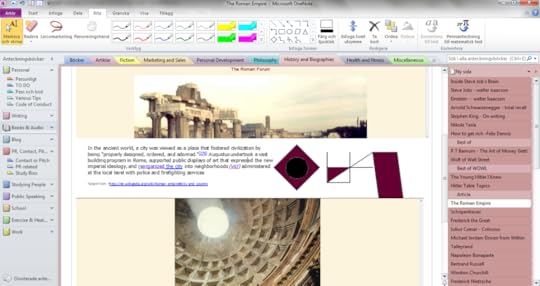 If you are anything like most people, you probably spend way too much time in front of the computer–and know it. But what if there was a way to make that time more productive?
If you are anything like most people, you probably spend way too much time in front of the computer–and know it. But what if there was a way to make that time more productive?
Such a way exists. It’s called writing–and you don’t have to be an aspiring author to do it. You simply need to create a commonplace and take a shitload of notes that you store in appropriate categories. This will make it easier for your mind to deal with all the information, and you’ll actually be inclined to gather more of it.
A few months from now, you will be surprised by how much smarter you’ll be–and how many things you have learned. I can honestly say that when I started keeping my digital commonplace like 1.5 years ago, it was the single most important thing I have ever done in terms of my self-development.
In this article I’m going to give you a peek into my comprehensive system for commonplacing by using the note-taking program OneNote.
I’ll tell you:
Why I use my commonplace
Some examples of how you can use your digital commonplace (OneNote)
15 things I study, track, or use my commonplace for
Tips and resources to use OneNote more efficiently
How to organize/reorganize your OneNote commonplace to fit your goals
These things may seem trivial, but I assure you that they are not.
We have only just entered the information age where the knowledge worker thrives. This means that managing information is becoming increasingly important for anyone who wants to become successful.
Why I Use My Commonplace
For me these are the main reasons:
To organize all information into concrete categories. This makes it easier for my mind to memorize the information and use it for its intended purpose later.
Napoleon Bonaparte was blessed with a brain that automatically categorized information in “separate drawers” that he could open or close any time he wanted. I am not that lucky, but fortunately for me, I live in an age where I can leverage technology to do the same thing.
To learn things more quickly. Similar to above, a commonplace makes it quick and easy for you to store and organize all interesting information. But the real trick lies in creating categories. This makes it easier for you to learn things, because you immediately associate it with examples backed up by facts that you have gathered.
To synthesize information. This is done by mixing different information and ideas, letting them blend together in your mind, and eventually reaching a synthesis where they become combined and you come up with a “new” idea.
All of three of these things are highly scalable, meaning that if you use your commonplace every day you will end up with huge amounts of information. Assuming that you have done a good job categorizing this information, you can then use it to see patterns more clearly than other people–people who use less efficient tools for organizing information.
As your commonplace grows, you will have to prune or reorganize the information once in a while. Otherwise it will become hard to navigate it, which means that you’ll waste time. The problem is that it sneaks up on you, and you don’t want to reorganize your commonplace. Because it’s boring.
But you definitely should.
Here’s how:
Keep it easy to manage: Know your categories well so that whenever you come across useful information you know exactly where to put it, thus saving yourself time.
Keep it easy to navigate: The main strength of using OneNote instead of a physical commonplace is that in OneNote it’s easier to accumulate a lot of info (copy-paste, screenshots, writing on keyboard) tag it, and easily search for it. But ideally, you shouldn’t have to search much. You should know where things are because you’ve set up your commonplace to be easy to navigate.
If your OneNote commonplace is easy to manage and navigate, it saves you much time in the long-term. And more perhaps more importantly, you’ll be inclined to using it more often.
Napoleon Hill said the following:
Knowledge, general in nature and unorganized, is not POWER; it is only potential power–the material out of which real power may be developed. Any modern library contains an unorganized record of all the knowledge of value to which the present stage of civilization is heir, but this knowledge is not power because it is not organized.
And it’s true. Your information isn’t particularly useful unless it’s organized, and unless you make it easy to manage and navigate. If you don’t do this it’ll be harder to for you implement your ideas.
–And ideas don’t mean shit until you implement them.
Examples of How You Can Use Your Commonplace
Despite having build the SGM website, and getting compliments from some people about its design, the fact is that I suck at web design and programming. But I do have a very strong intuition. When I see something that I like I retain it in OneNote and find some way of using it.
If I see something I think is elegant I just copy it to my commonplace. I take a print screen, and I copy the CSS/HTML code. Then I experiment with it later when I can find the time. I don’t multitask. I want to have a large bulk of uninterrupted time so that I can get into a flow state and experiment with it until I am satisfied.

By doing this, I get a lot of good case studies that I can review and tinker with later when I have time. I compile a lot of related information, then digest it in a long sitting.
Here are some examples of things/lists you’ll want to compile and then go through it:
Topics/essays. Anything you’d want to write about
Useful tips and heuristics (helpful rules of thumb). Rules you to live by
A list of ideas/strategies. It doesn’t necessarily have to be business ideas, just make sure you write down your ideas, store them, and implement them!
Insightful quotes. You can check out wikiquotes for great quotes on most famous people
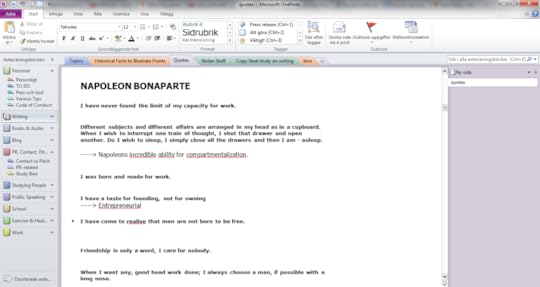
Design-related things (web design, nice looking images, code)
Journal. Run through the events of the day: it improves your memory and it’s a good excuse to write more and to reflect on the day. Here’s an example of how I format my journal:
Date
Weekday
Brief overview of the day
Different times when I am writing in the journal.
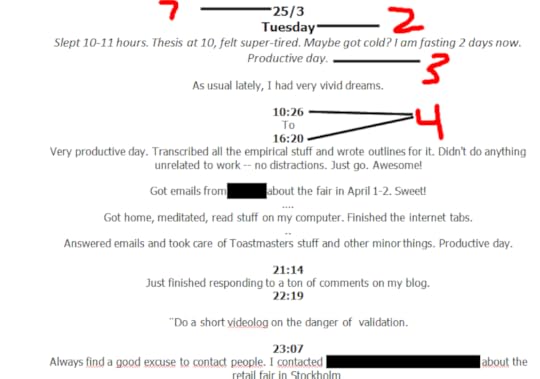
Daily lessons. Like a summary of the journal entry. What did you learn today? This one gets powerful over time
To-do lists. I keep a few different ones. I keep my general to-do list, which contains the most immediate/important things at the top of my journal to make sure I get exposed to it many times per day. You could do it differently though. There are lots of templates that you can use if you’d like. Here’s an example of a modified to-do list, as per Stephen Covey:
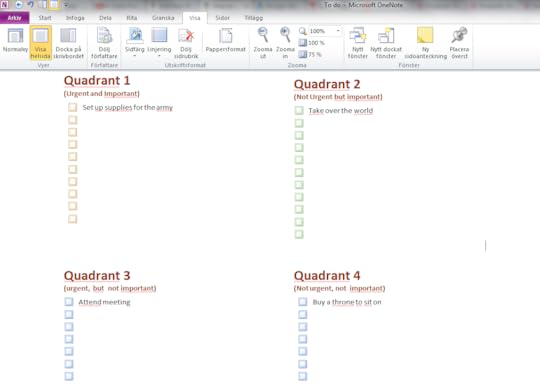
New words in other languages. As soon as you find a new word, put it in, and write the definition. If you’re ambitious you could also write some synonyms
Stocks or financial numbers. Put information, links, and relevant dates here. When did you buy the share? What was the return on investment last year?
Notes. Keep notes on the books you read on your computer or articles/blog posts you read online
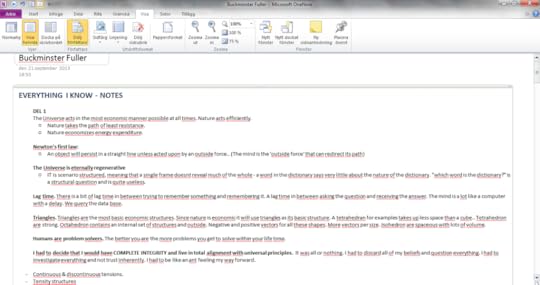
A list of good books, music, clothes, (insert item) you want to buy or download. You can then take a day and go through the lists in bulk to save time and concentration
A list of available jobs you’d like to apply to. And the necessary information or requirements
A list of interesting gigs on Fiverr, odesk, or similar outsourcing sites. You never know when it might come in handy
A list of contact information for interesting people you will contact soon, or will want to contact later when the time is right
Copy/study/steal: This is an important one. . .
–Because we learn mainly through imitation. Picasso spent his first 10 years copying other people, then he developed his own style. Napoleon read all biographies and war-related documents from all great warlords and generals before him, then he perfected his own military tactics. Einstein read most of the important texts on physics and philosophy, tinkered with gadgets, and made experiments from the time he was 10-25+ years old, before beginning his work on relativity.
Point being: it is rare that people succeed before first studying and imitating the masters who came before them. You should do the same. No need to reinvent the wheel. More on this at the end of the article.
13 Things I Study, Track, or Use My OneNote Commonplace for
Except for the things on the list above, here are some other things I keep categories for in OneNote:
Studying blogs, websites, companies, people (copy/study/steal categories)
Studying successful people
Keeping track of public speaking. My own, and others
Studying bios of successful people (how they made up their own titles). What are they selectively communicating with the limited amount of space?
Study landing pages
Studying email marketing
School and extracurricular activity schedule
Passwords and security-related things that I want to easily look up. Obviously nothing too private, just in case. You may want to use OneNote’s password protect function to keep this section safe
Book & product ideas, and various ways of making money
Book titles of best-selling books
Workout results
Food I eat and amount of meals per day
When I wake up and go to bed
There’s actually a lot more. But these are the main ones that I figured you might find useful or interesting.
How to Organize Your OneNote Commonplace
Here are some big ideas to get you started by coming up with the right categories to start compiling information:
Think about what your goals and aspirations are. Write them down. Then make a section for each of these things in OneNote
Think about what fields of knowledge you need to study to achieve your goals. Then make these your categories inside of the sections
Here’s a model of what I mean:
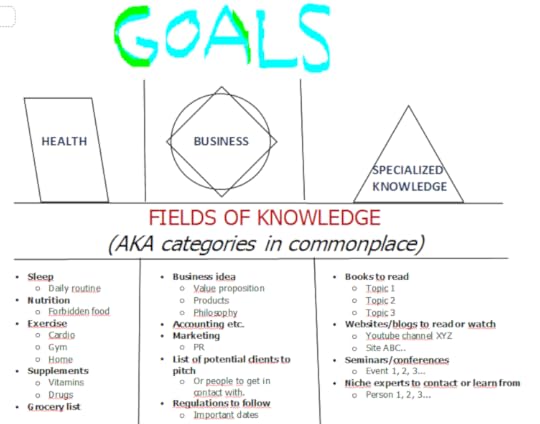
And here’s how those three sections of categories would look like in OneNote:
(Note: I just copy pasted 3 tabs into the image below for convenience sake so that I didn’t have to use 3 images)
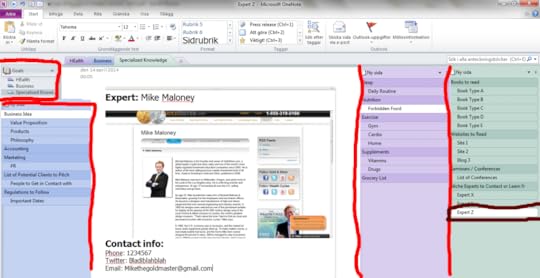
Make your copy/study/steal categories. The best people in any niche are the best for a reason. Why? That’s for them to know, and for you to find out.
Study the best people in your field and gather their best material. See if you can find commonalities and similar strategies used by the best people in different niches.
If the the best people in your field have blogs or websites, get on their mailing lists and save all the useful things to your commonplace to sift through when you have time. Then study it in bulk to find the patterns.
Go back to this material every once in a while for inspiration, to copy it, to learn from it, and to use what works. Then make it your own, like Picasso.
Think about what people you look up to and would like to learn from
Watch their (TED) talks if they have any. Take notes. Copy the interesting stuff from their Wikipedia pages or sites. Read articles about them. In my commonplace I call this section “studying people”. Most of my guys are dead.
Tips and Resources To Use OneNote Efficiently:
First I’ll tell you 3 of my favorite things, then I’ll show you some useful external resources for more studies if you’d like.
And don’t worry, it’s all free.
#1 : Getting rid of black pages
For some reason, OneNote can turn out black pages. It sucks. Here’s how you fix it:
Press “format”. This will pop up the screen to the right where you can select different formats.
Select “auto”.
Fixed. The page is no longer black!
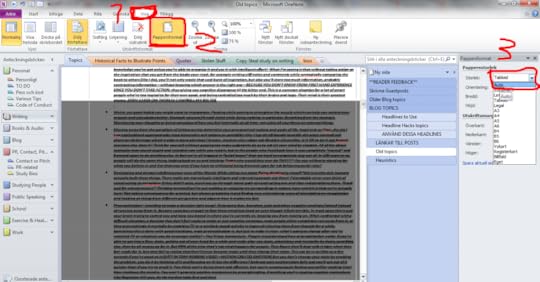
#2: Alphabetazing your pages
Check out this article, download the zip-file, extract it, and you should be good to go. Here’s how you use the add-in in OneNote:
Click “Add-ins” (mine is called “tillägg” in Swedish)
Click “Sort Pages”. It loads a while.
All your pages are alphabetically sorted.

#3:
Linking to another page/section inside of your OneNote commonplace
This is a highly useful function that I admittedly don’t use enough. But I should. Instead I just write something like “get info/cross-reference from section XYZ”. And it works, because I know the organization of my commonplace very well and can navigate through it easily. But I’d save more time if I did this.
(Note: it’s the same way you link to a website.)
Click “Insert” (Swedish = Infoga)
Click “Link” (Swedish = Länka)
A box pops up and you can choose a section inside your notebooks


External resources:
I’ve told you about why you should use OneNote to keep your commonplace and how I do it. But I haven’t told you how to use the software. Because I think it’s very easy and intuitive. But if you think otherwise, check out the following resources to learn how to use OneNote:
–A complete list of all shortcuts in OneNote:
Keyboard Shortcuts in OneNote 2013: Even if you’re already using OneNote you should check it out. My 3 favorites ones are:
Ctrl + N = Turns the text you have selected into your standard font and size
Print screen = press the “prt sc” button on the keyboard, then Ctrl + V inside OneNote
Ctrl + B = Search for something inside of a specific page. Useful for large pages
–Onetastic add-in, useful calendar, and various macros:
Try the Onetastic add-in to bring tons of new features to OneNote: An example of a macro is “search and replace”. You can also create macros by yourself. You download the add-in or just the calendar here.
Here’s how it looks when you have installed it:

–A few macros from Onetastic:
(Note 1: These require that you download the free add-in)
(Note 2: For some people these macros are slow. But they can be nice to have just in case.)
Insert a horizontal line: Can be useful for formatting.
Word count: Because you don’t want to copy paste your text into a word doc just to check how many words there are.
Autofill tables: The same way Excel does it.
Function: Also like Excel. Lets you quickly calculate average/sum etc.
Search and Replace: Can save you time in large pages of text.
Table of Contents for a page: This is useful if you write a ton of essays or ideas in a document. Just remember to use the headings, because that’s what it uses to compile the TOC.
–Lifehacker (1) guide on OneNote
Microsoft OneNote is a Note-Taking Power Tool: A short explanatory article on of how OneNote works and some of its basic functions as a note-taking program.
–Lifehacker (2) gives some good tips on how to use OneNote:
Seven Tips and Trick to Get More Out of OneNote: Skimmable and useful. You’ll probably want to use at least one of the features.
Φ————————————————Φ
Kudos for making it all the way to the bottom. This is meaty post, I know, but it’s a hugely important one.
I have yet to find a better way of externalizing my thoughts and compartmentalizing my life than by using this system for commonplacing. Oh, and you can sync it to most smart phones too.
How many people do you know that keep a commonplace?
–I know of two people. And they did it after seeing mine. But everyone should do it.
Create your commonplace now, and you’ll thank yourself later.
It might be a hassle to set it up at first, and it might take some time until you find a system that’s working well for you. But once you do you will:
Spend time in front of the computer more productively
Become more organized
Learn things quicker
Save time
Get more ideas
Have a large storage of information that you can return to any time you need inspiration
Get a scalable competitive advantage compared to other people
It’s worth the the time it takes to set up. Do it ASAP, because the positive effects from your commonplace are exponential–like cumulative interest.
I’ve told you how I take notes and keep my commonplace. Now I want to know how you do it:
–How do you use OneNote (or other note-taking programs)?
–Do you have any useful tips for commonplacing, arranging your notes or storing your information?
–Do you use any smart ways for compiling and then compartmentalizing information?
The post How to Use OneNote to Create Your Commonplace appeared first on Startgainingmomentum.



